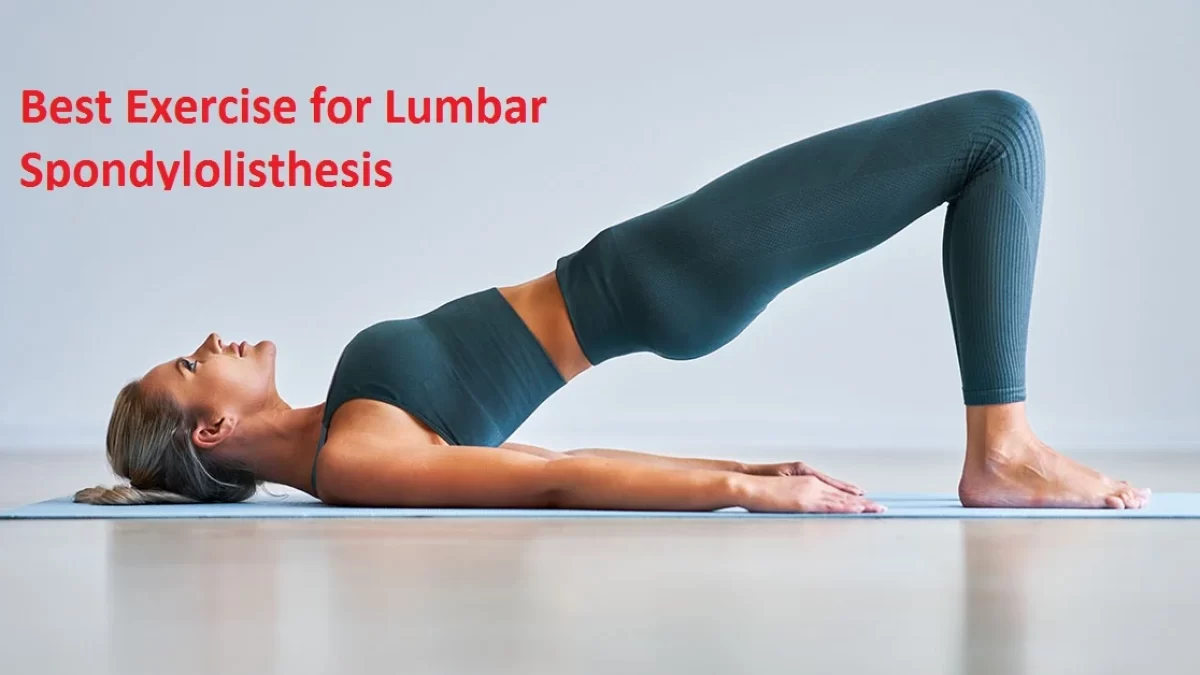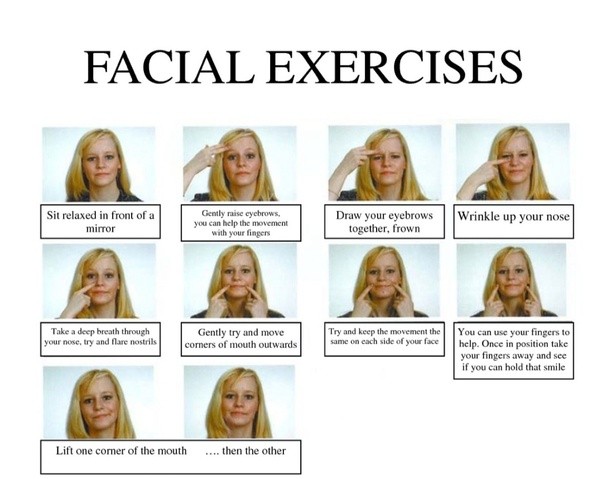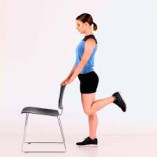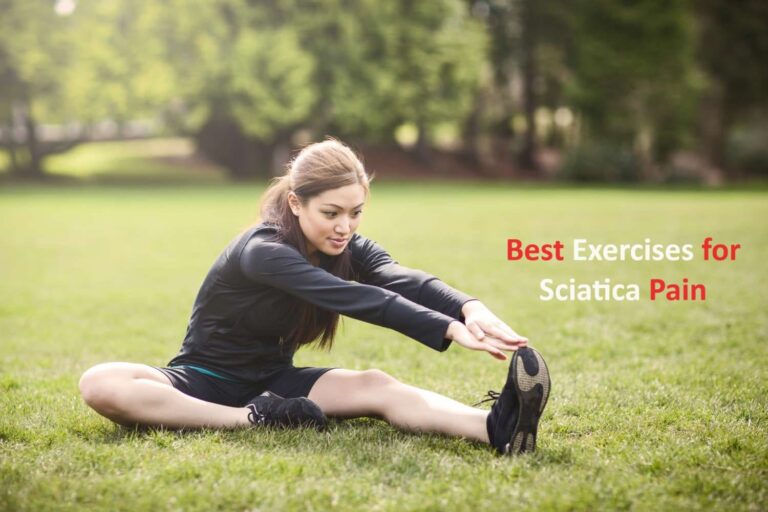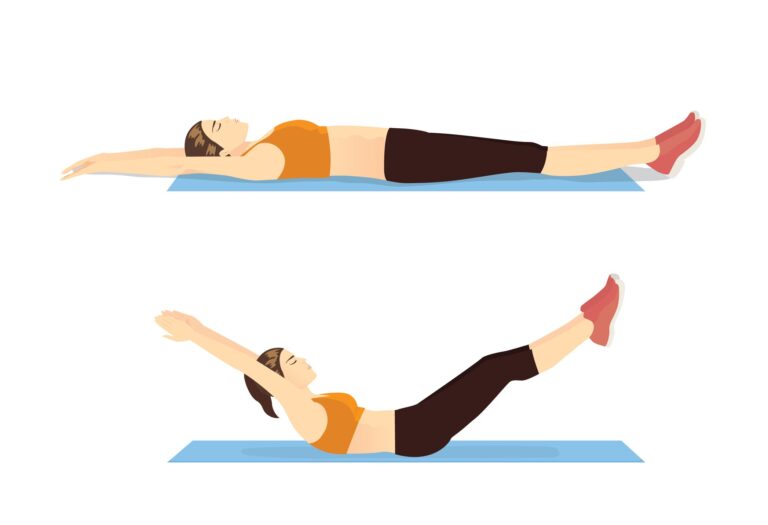12 Best Exercise for Lumbar Spondylolisthesis
Exercise for lumbar spondylolisthesis aims to strengthen the muscles surrounding the spine, improve flexibility, and increase stability in the affected area.
Exercise therapy is a vital element in the adequate treatment of lumbar spondylolisthesis. For patients with spondylolisthesis, understanding which exercise helps to strengthen the back muscle and which will also displace it can mean the distinction between a functioning and non-functioning spine.
Spondylolisthesis occurs when a vertebra has become displaced or has slipped forward due to deterioration. People who suffer from this condition can treat it actually with spondylolisthesis physiotherapy. Although the phrase “spondylolisthesis” may seem stressful, there are exercises and stretches you may perform at home that can have a big impact. 5% to 10% of people in the population have spondylolisthesis to some extent, and some of them may not even be aware of it. If you do know you are suffering from this, it is important to do exercising and work on improving your back mobility to eventually, avoid pain, avoid operation and have a continued, active lifestyle.
What is Lumbar Spondylolisthesis?
Lumbar Spondylolisthesis happens when a part of the spinal bone (vertebrae) slips out of alignment and onto the bone below it. This can be induced by deterioration of the vertebrae or disc, trauma, fracture, or genetics. It most commonly happens in the lower spine. According to a 2009 report in a peer-reviewed journal, it happens in about 6 to 11.5 percent of the grown-up population. Typical exercises may help relieve pain and improve the function and quality of your life.
Symptoms of spondylolisthesis:
Symptoms have lower back pain that gets more harmful with standing and hyperextension. Other symptoms include:
- Hamstring tightness
- Buttocks pain
- Low back pain
- Neurological symptoms like numbness or tingling down the leg
- Difficulty in sitting and standing
Here we describe the best Exercises for pain relief:
Your physical therapist will be able to give you a customized home exercise program to assist reduce discomfort brought on by spondylolisthesis following a comprehensive evaluation. This therapy mostly includes lumbar flexion movements, core stabilization training, and exercises or stretches for the muscles of the back, hamstrings, and hips. A low-impact activity like cycling or swimming is also advised to encourage healing and lowering pain.
12 Best Exercise for Lumbar Spondylolisthesis
Pelvic tilt
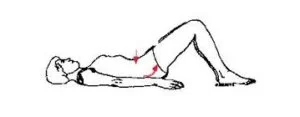
- This exercise helps to reduce pain by stabilizing the lumbar spine in a flexed position. This exercise is done in various positions depending on pain and the patient’s selection.
- To perform this exercise, you have to take a supine lying position with your knees flexed and feet flat on the floor.
- Begin by flattening your lower back against the floor, and contract your tummy muscles to maintain the position.
- Control for 10 seconds before resting.
- Do this ten times.
Crunches

- Weak core muscles usually contribute to instability and induce pain in those with spondylolisthesis. You can support your abdominal muscles by doing exercise.
- Roll slowly and focus on the right form by contracting your core muscles before beginning any movement. Tiny movements make a big difference.
- Do not force your body to push through the full range of movement for these exercises, as it may improve pain and slow your healing.
- Begin by lying on the floor with your knees flexed, feet flat on the ground, and arms folded over the chest. If required, you can help your head with your fingers behind your ears but do not pull on your head as you go through this exercise.
- Gradually raise your head and shoulders off the ground until a contraction in the tummy is felt.
- Hold for five seconds, and then lower to the beginning position.
- Do this ten times.
Double knee to chest
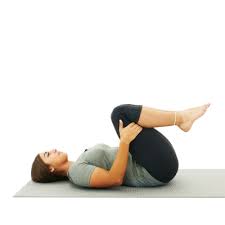
- Spondylolisthesis-related pain will be improved and instability will be reduced by strengthening the deep core muscles of the trunk.
- Begin by lying face up with your knees flexed and feet flat on the bed.
- Engage your belly muscles by pulling the belly button to the bed.
- With the help of the hands, drag both knees up to the chest and maintain for five seconds.
- Rest and repeat 10 times.
Multifidus activation
- The multifidus muscles are little but important muscles that lie next to your spine. They help with turning and twisting movements, and they increase the stability of the spinal joints. These muscles are often ineffective in people with spondylolisthesis.
- You can discover and start your multifidi by lying on your side and getting your top hand around to feel the vertebrae of your lower back. Gradually move your fingers to the side until they slip into the track beside your spine.
- Start your core muscles by imagining you are pulling your thigh to your chest, but do not move your leg.
- This squeeze should cause the multifidus muscle to swell under your fingers.
- Maintain this for three seconds, and repeat it 10 times per side.
Hamstring stretch
- In patients with spondylolisthesis, spinal instability usually induces tension in the hamstrings, the big muscles that run down the back of the thighs. Tight hamstrings can draw on the lower back, causing pain or discomfort.
- Sit on the floor with your legs stretched directly in front of you, toes pointed toward the top.
- Gradually lean forward and reach for your toes. Don’t worry if you can’t touch your feet — just reach until you feel a stretch down the back of your legs.
- Maintain for 30 seconds and repeat three times, trying to get a little further each time.
Dead bug
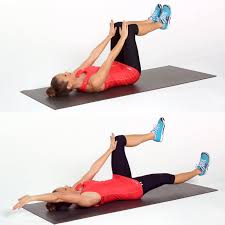
- Dead bug exercise is a more progressive version of the pelvic tilt.
- You start this exercise in the same fashion: on the back with the knees flexed, feet flat against the bed, and arms at your sides. Pull the belly button toward the spine as you pull the abdomen.
- Holding the legs flexed, raise one of them off the ground and hold it for 5 seconds before lowering it to the floor and raising the other leg for 5 seconds. Next, raise one arm over the head; hold it for 5 seconds, then lower it. Do this on the opposite arm.
- Once this evolves easily, you can double up, raising a leg and the opposite arm simultaneously.
- Follow this sequence for 5 to 10 repetitions for three sets.
Gluteal stretch
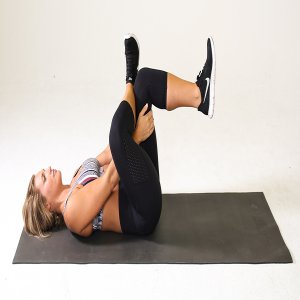
- To do a gluteal stretch, you have to Lie on the back with both knees flexed.
- Put the ankle of the right leg against the left knee. Hold onto the thigh of the bottom leg and pull it toward the chest until you get a stretch in the buttocks and possibly the external part of the hip. Keep this pose for thirty seconds before changing your legs.
- Do this stretch three times on both sides.
Quadruped arm/leg raises
- To begin this exercise you have to come on your hands and knees. Pull the abdominals; while doing so, lift one arm and the opposite leg.
- Keep this pose for 5 seconds and then lower the leg and arm to the floor and repeat with the opposing arm and leg.
- Do 10 repetitions on both sides.
Side Plank
- To perform this exercise you have to Lie on your side, balancing out your legs, hips, and shoulders.
- Utilize your forearm to support yourself up, providing your elbow is directly below your shoulder.
- Suspending your weight on your forearm, raise yourself off the bed. Keep this position for 15 seconds before carefully falling it.
- Repeat this exercise on the different side.
Ball back extension
- To perform this exercise you need an exercise ball. lie on the ball with your belly, with your elbow flexed and your hands flat on the ball
- Keep your legs straight and toes pointed down on the ground
- Carefully raise your arms straight, going out from the ball as you would in a push-up
- Do not go too high for your back to turn upwards
*You can also lean to twist to the left and the right sides instead of directly to work the sides, and for your back to support rotation.
Bridging

- Begin by lying on the floor with the back flat. Flex the knees and put them firmly on the floor. Ensure that the hips are wide apart and have the spine in a neutral pose. Put your arms by the sides throughout the bridge exercise.
- Then by pushing your heel on the mat, lift the pelvis off the ground and activate the glutes. Your body should form a serial line from the chin to the knee while relaxing on the shoulders.
- Breathe in and lower the pelvis. Return to the initial position and then repeat this exercise.
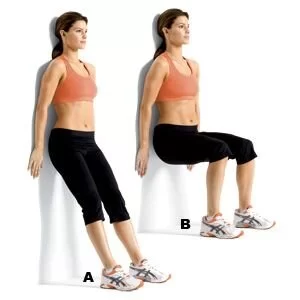
Wall squats
- To perform Wall squats you have to Stand with your back support against a wall and maintain your feet shoulder-width apart.
- Gradually lower yourself into a squat position, supporting your back against the wall. Keep for 5-10 seconds and then slowly release.
- Recall to always follow your body and evade any exercise that induces pain or discomfort.
Exercises to Avoid With Spondylolisthesis
Exercises that put additional stress on the back may be necessary if you have spondylolisthesis because it makes your spine more susceptible. It is important to consult with your doctor about your exact condition before additionally harming your back or spine. Here we describe spondylolisthesis exercises to avoid:
- Heavy weightlifting: Weightlifting, particularly if you utilize improper lifting methods, can take a toll on your spine in many ways. While raising, you are putting extra strain on your back, especially on your lower or lumbar region.
- Twisting or bending: Avoid exercises that require you to twist or bend excessively, such as toe touches, even if they can be beneficial for strengthening your back and abdominal muscles in the case of spondylolisthesis. This may induce further injury to your spine and generate additional pain.
- High-impact activities: It is important to stay active during your healing process from spondylolisthesis, but it is advised to roam away from those movements that may induce harm to your back. activities like running, basketball, football, etc.
- Avoid activities that put excessive stress on the spine like full sit-ups.
- Avoid movements that generate pain or discomfort. If an activity is causing pain, stop this exercise instantly and confer with a medical professional.
- Avoid activities that apply quick or jerky movements.
Lifestyle Tips :
- Keeping a maintained range of movement and training will be the most useful to reduce spondylolisthesis. You do not always have to do flexion movements, but you can count on simple extension exercises to build up flexibility again. Recognize, do not overextend your back!
- You can apply cold and hot packs. Keep cold packs for relief of excessive soreness: you will need to lie down while placing a cold/ice pack on the lower part of your back. only apply a hot pack when the area is not inflamed.
- Your spine and its scar tissue are very weak when suffering from spondylolisthesis. It is greatly advised to communicate with your physician to know which movements and leads may cause further harm and pain.
FAQ
Can exercise reduce spondylolisthesis?
In extreme cases, individuals with spondylolisthesis may need surgery. Invasive procedures are not always needed, though. Mild exercises can help relieve pain and enhance your quality of life.
Which activities should be avoided with spondylolisthesis?
Most people with spondylolisthesis should avoid movements that might generate more stress to the lumbar spine, such as heavy lifting and sports/activities like gymnastics, football, competitive swimming, and diving.
Is physiotherapy appropriate for spondylolisthesis?
One of the more effective approaches to treat spondylolisthesis is through a physical therapy regimen for two reasons in particular: (1) It can aid in making your spine’s supporting muscles stronger, and (2) it can guide you on how to keep your spine safe and control further and future injury.
Which is the most suitable position to sleep in with spondylolisthesis?
Sleeping in a reclined position may help to ease the pain from ischemic spondylolisthesis. By supporting the body as though it were in a reclining chair with pillows beneath the back, neck, and head, this position can be tried.
How do you sleep with spondylolisthesis?
Some individuals with spondylolisthesis acquire the most pain relief while sleeping in a reclined position. Reclining supports your legs at an angle to your trunk, which can underestimate the stress on your spine.
How can you differentiate spondylosis and spondylolisthesis?
Spondylosis affects the partition of the pars interarticularis. In difference, spondylolisthesis is known as a slipped vertebra. When one bone of the trunk slips forward over another, it induces damage to the spinal design. In some cases, a strain fracture may be accused.
Which is the main common cause of spondylolisthesis?
In adults, the most typical cause is abnormal wear on the cartilage and bones like arthritis. ladies are more likely to experience it than males. Bone disease and fractures can also generate spondylolisthesis.
Which things make spondylolisthesis better?
Most individuals who have spondylolisthesis, a misalignment of the spine, find that nonsurgical therapies, such as physical therapy and bracing, reduce pain and enhance function.

